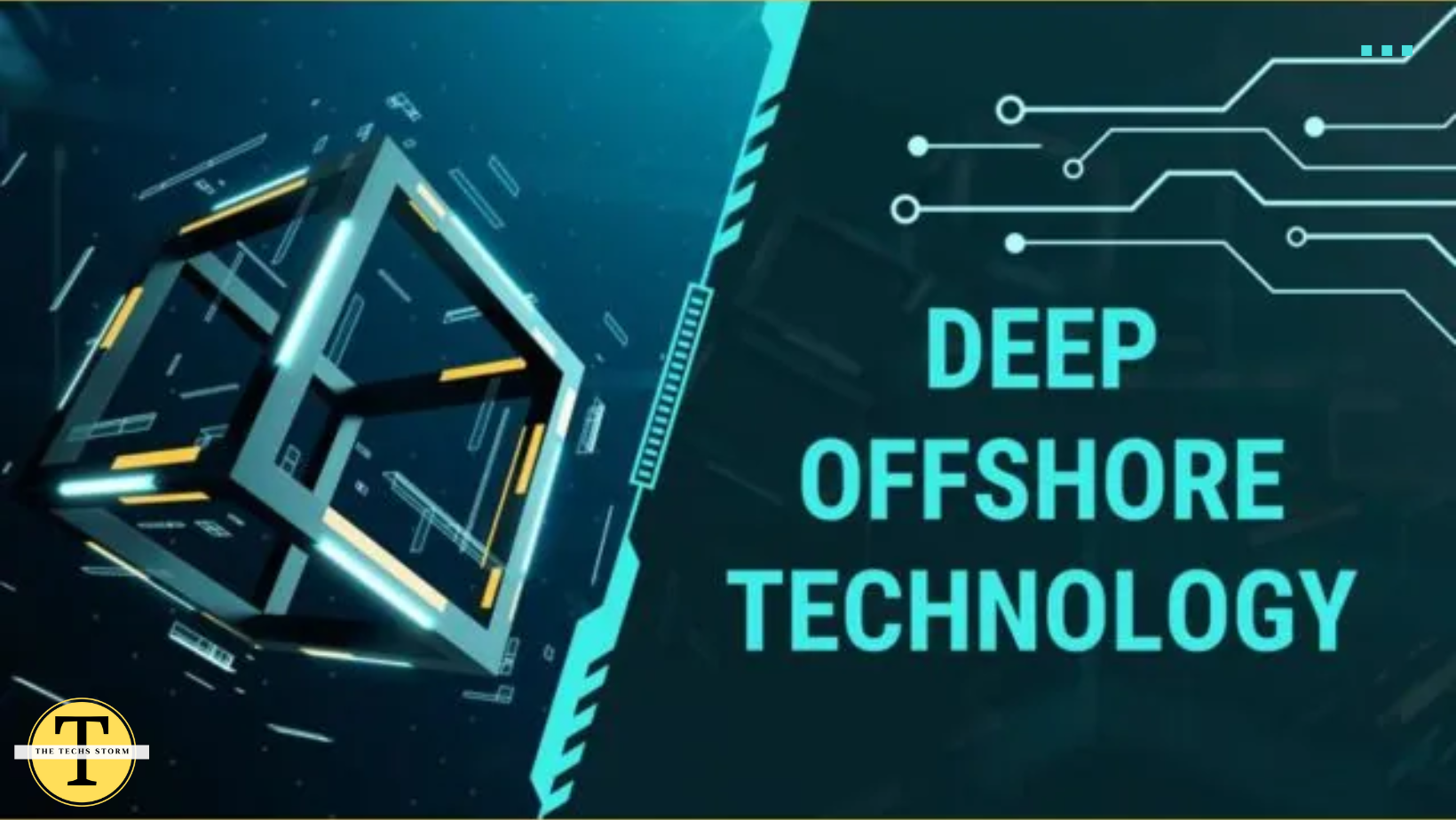Introduction
Deep offshore technology is the advanced engineering techniques and technologies applied at depths more than 500 meters to recover oil, gas, and other resources from beneath the ocean floor. Accessing unreachable reserves by conventional onshore techniques depends critically on this technology.
Extreme conditions and technical difficulties in deep offshore areas require creative ideas and constant inventiveness. The appeal of great unrealized resources and the technological achievements in these depths keep pushing the envelope of energy exploration and production.
Deep offshore technology transforms our use of natural resources and emphasizes the technical ability needed to function in demanding conditions. Rapid technological evolution in this field has included robotics, advanced drilling platforms, and sophisticated subsea systems, marking major technical and environmental management benchmarks.
Fundamental Technologies and Ideas
Subsea Engineering and Equipment
Modern subsea engineering is mainly used in deep offshore projects. This covers machinery, including subsea production systems and blowout preventers (BOPs). Under high-pressure situations, BOPs are essential for managing and stopping oil spills. Subsea production systems combine several techniques to extract and treat oil straight at the seabed, improving efficiency and safety.
Drilling Technologies
Deep offshore exploration depends fundamentally on modern drilling methods. Dynamic positioning devices help drilling boats keep exact placements above the drill site independent of ocean currents and winds. Extended-reach drilling (ERD) techniques access many reservoirs and lower environmental impact by allowing drilling horizontally over large distances from a single vertical wellbore.
Pipeline and Flowline Technology
From the wellhead to processing plants, pipelines, and flowlines move oil and gas. Depending on water depth and pipeline size, installing these structures in deep waters requires sophisticated techniques like J-lay and S-lay approaches. Modern materials and coatings are applied to improve the life and dependability of these vital infrastructures due to their corrosive character in the marine environment.
These developments in deep offshore technology enhance environmental preservation and safety and improve the management and extraction of underwater resources. Every new improvement shows the industry’s will to overcome the particular difficulties of deepwater operations.
Use of Deep Offshore Technology
Oil and Gas Exploration
Exploration and production of oil and gas from the undersea floor depend on deep offshore technology. This technology lets businesses find reserves in formerly unreachable deep seas. Exploration teams may use seismic surveys and cutting-edge drilling methods to locate and access valuable oil and gas reservoirs in demanding surroundings.
Field Development and Production
Deep offshore technology helps develop and produce once-discovered oil and gas fields. This entails building large-scale hydrocarbon extraction, processing, and transportation pipelines and wells. From these deepwater wells to surface facilities, advanced subsea technologies control the production flow to guarantee effective operation over the field’s lifetime.
Renewable Energy Sources
Besides fossil fuels, deep offshore technology is essential in creating tidal energy and offshore wind, among other renewable energy sources. Deep offshore technology helps large wind turbines placed on the ocean floor erect, maintain, and connect to electricity networks. Analogous to this, tidal energy converters use ocean currents and depend on solid technology for their implementation in deep seas.
These projects demonstrate how deep offshore technology serves the energy sector and stimulates innovation across several sectors. It advances sustainable energy solutions while satisfying world energy needs. Every application shows how flexible and essential this technique uses ocean resources.
Environmental Impact and Sustainability
Challenges in Deepwater Environments
Deep offshore technology works in delicate and mostly uncharted oceanic environments. Extraction activities, including infrastructure building and drilling, can disturb the seafloor and marine life. Additionally, oil spills can seriously harm marine life. One of the sector’s main difficulties is reducing these effects on the surroundings.
Impact on Marine Ecosystems
Deep offshore operations’ related activities can impact marine environments and species. Drill and industrial noise disrupt aquatic life, possibly changing migration patterns and reproductive activities. Disturbances in sediment can smother marine vegetation and wildlife, affecting food chains and the general state of ecosystems.
Sustainability Initiatives
The sector has evolved various sustainability projects in response to these environmental issues. Businesses are spending more and more on technologies meant to lower the environmental impact of offshore operations. For instance, more effective waste management systems and improved drilling methods that minimize seabed disturbance help to lower the ecological impact.
Green Technology Integration
Additionally, the integration of green technologies in deep offshore activities is increasing. Innovations like biodegradable lubricants and better oil recovery systems that reduce the possibility of spills are finding their way into use. Furthermore, attempts to run offshore platforms on renewable energy sources are becoming popular, lowering carbon emissions and preserving non-renewable resources.
These environmental initiatives highlight the industry’s will to preserve marine habitats while yet satisfying world energy consumption. The sustainable development of deep offshore technologies depends critically on reducing environmental impact and improving ecological compatibility.
Economic and Regulatory Factors
Global Market Trends
Global market trends that decide the viability and extent of offshore projects significantly affect deep offshore technology. Deepwater exploration and extraction investments are in line with global energy consumption as demand rises. These projects are capital-intensive, though, and involve significant financial risks because of geopolitics and changing oil prices. Before pledging to new offshore projects, companies must carefully evaluate the market’s state.
Regulatory Frameworks
Operating in deep seas calls for solid regulatory compliance with international standards, environmental protection, and safety assurance underlined by a commitment. These rules are constantly changing to accommodate fresh ecological issues and technological developments. Businesses have to negotiate these convoluted legal environments, which differ depending on nation and area, to keep their operational licenses and avoid the hot pursuit of heavy fines.
Investment and Cost Management
The economic viability of deep offshore projects depends on effectively controlling their considerable expenses. Strategic planning in budget allocation, technology purchases, and operational logistics all fall under this heading. Managing costs and maximising returns depend heavily on the application of affordable technologies and techniques, such as better drilling efficiencies and increased recovery strategies.
Difficulties and Approaches
Deep offshore projects have economic difficulties, including the requirement for significant upfront costs and the uncertainty of returns resulting from changing market conditions. Companies sometimes form alliances and joint ventures to help with these difficulties by distributing the financial risks and pooling resources and knowledge. Deep offshore projects’ significant financial loads and technological requirements depend on these cooperative efforts.
Future Trends and Technological Advancements
Robotics and Autonomous Systems
The future of deep offshore technology mainly consists of robotics and autonomous systems. These developments are poised to transform operations by completing difficult jobs under the ocean surface without direct human intervention. Increasingly employed for surveying, maintaining, and repairing subsea infrastructure, autonomous underwater vehicles (AUVs) and remotely operated vehicles (ROVs) improve safety and operating efficiency.
Big Data and Artificial Intelligence
Big data and artificial intelligence (AI) optimize resource extraction and operating efficiency, revolutionizing deep offshore activities. Artificial intelligence systems use large volumes of geological and operational data to detect equipment breakdowns, optimize drilling operations, and improve decision-making processes. These technologies make more exact exploration possible, lowering downtime and helping to save costs by increasing production.
Advanced Materials and Manufacturing
Improving the lifetime and efficiency of offshore equipment depends on developing sophisticated materials and production processes. Under research are new alloys and composite materials resistant to high pressure and corrosive ocean environments. 3D printing is also under investigation for on-site replacement part manufacture, lessening the demand for huge stocks and maintenance delays.
Sustainable Energy Integration
Deep offshore technology matches renewable energy projects as worldwide attention turns towards sustainability. In offshore rigs, solar and wind energy sources will help lower running expenses and carbon emissions. This change promotes environmental objectives and fits with world energy policy aiming at industrial operations using greener energy options.
Case Studies
North Sea Operations
Deep offshore technology has found a center in the North Sea, where various innovations in deepwater drilling and severe weather conditions have been pioneered. Developed here, including enhanced platform designs and emergency response plans, these ideas have set industry standards. The region’s emphasis on raising oil recovery rates using improved oil recovery (EOR) techniques highlights how creativity is combined with pragmatic application, supporting established fields’ sustainability.
Gulf of Mexico Developments
The Gulf of Mexico is a perfect example of how changes in regulations and technology could propel sector development. Following significant oil spills, this area used creative recovery techniques and strict safety precautions. Deepwater drilling rigs fitted with modern blowout preventers and real-time data monitoring systems have enhanced safety and operational efficiencies, establishing standards for offshore activities worldwide.
Emerging Markets: Brazil’s Pre-Salt Exploration
Pre-salt layers from Brazil show a significant advance in deep offshore technologies. Thick salt layers over oil sources defined the problematic geological conditions that demanded new seismic technologies and drilling methods. Brazil’s pre-salt exploration has become a success tale thanks to its approach to licencing, local content standards, and technological cooperation, which has increased its oil output and promoted local economic development.
These case studies show several uses of deep offshore technologies across several areas and difficulties. They also show how customized technological and legal strategies can enable effective offshore resource exploration and exploitation, impacting world energy markets and technology norms.
Conclusion
Deep offshore technologies have transformed our methods of oceanic resource exploration and extraction. As robotics, artificial intelligence, and sustainable energy develop, the sector keeps changing to satisfy the rising worldwide energy consumption. These technologies reduce environmental effects, increase safety, and boost operational efficiency.
Economic considerations like investment and market trends heavily influence the development and viability of offshore projects. Managing difficult legal systems guarantees that activities follow environmental and safety criteria, thereby safeguarding workers and maritime environments.
Future developments point towards more sophisticated and automated systems, which will improve the capacity of deep offshore technology even further. Including renewable energy sources in offshore platforms helps to lower carbon footprints and promotes world sustainability targets.
Case examples from areas such as the North Sea, the Gulf of Mexico, and Brazil illustrate deep offshore technology’s several uses and achievements. These illustrations underline the need for strategic investment, regulatory compliance, and creativity in conquering obstacles and reaching operational excellence.
Constant technological and environmental improvement will be vital as the sector develops. Cooperation among stakeholders, including governments, businesses, and research institutes, will result in further developments and guaranteed responsible use of offshore resources.
Ultimately, deep offshore technology is leading the stage in modern energy exploration since it allows access to hitherto unattainable resources. Its future rests in constant innovation, rule-abiding, and sustainability commitment, opening the path for a solid and effective energy industry.
FAQs
1. What is deep offshore technology?
Deep offshore technology involves advanced engineering and equipment for investigating and harvesting renewable energy sources, gas, and oil from undersea environments.
2. How does deep offshore technology impact the environment?
Although deep offshore activities can negatively affect marine ecosystems, developments in sustainability and technology seek to reduce these effects and safeguard ocean life.
3. What are some key technologies used in deep offshore operations?
Essential technologies are autonomous underwater vehicles ( AUVs), dynamic positioning systems, sophisticated drilling methods, and subsea production systems.
4. Why is regulatory compliance important in deep offshore technology?
Regulatory compliance helps prevent mishaps and minimize environmental harm by guaranteeing conformity to international standards, safety, and environmental preservation.
5. What future trends are expected in deep offshore technology?
The rising usage of robotics and artificial intelligence, integration of renewable energy sources, and developing sophisticated materials to improve efficiency and sustainability define future trends.









